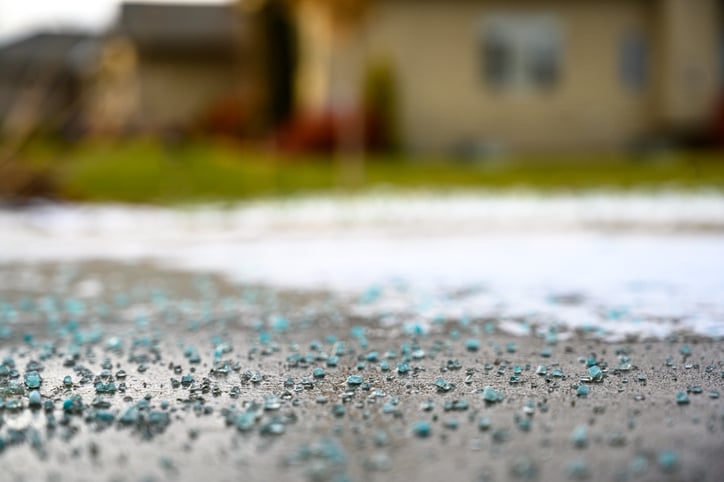If you’re wondering how to repair salt-damaged lawns, we don’t have to tell you that Michigan winters can be hard on your lawn. With our recent snowstorm, people have been busy digging out cars and taking care of ice on walkways.
In order to protect ourselves and our communities, our municipalities use salt in order to cut down on icy conditions to protect motorists and pedestrians. We as homeowners also use salt or similar products to keep our walkways and driveways from being hazardous as well.
While these products are great in how we use them, they also can cause unwanted damage to our shrubs and the grass along our walkways. It’s best to choose products that can reduce this damage, or take steps to prevent damage in areas we cannot control.
Why Salt Causes Damage
Rock salt is primarily composed of 98.5% sodium chloride, this makes nutrients unavailable to your grass and draws the moisture out of plants causing them to turn brown. Most salt trucks use Sodium Chloride because it is a cheaper form of salt. If you are along the main road or use a lot of salt along your walks this kind of damage is likely unless you are using a product that is safer for grass and plants (which we recommend).
Different De-Icing Products
Other than standard rock salt, there are different types of products you can use for de-icing. There are ice-melt products that you can use around your home that do a good job and will not damage the grass along the edges of the sidewalks or driveways. Commercial products that contain potassium chloride have a lower burn potential than ones that contain sodium chloride.
Sand, kitty litter, and cinders will work as an aid to prevent someone from slipping on the ice, but do not work as well as ice-melt. It is usually not a good idea to use regular rock salt, as it will damage the surrounding grass and plants easily, and it can damage concrete and blacktop.
How To Repair Salt-Damaged Lawns
Soaking your lawn heavily over a few day periods can help to remove the excess salt that has entered your soil until the soil is free of the excess salt, it will be unable to regrow.
Using pelletized gypsum soil conditions to reverse salt damage on lawns is also possible. The gypsum, or calcium sulfate, replaces the salt with calcium and sulfur, which will help to heal the grass and encourage new growth. It is also useful in helping the soil retain water. Use a lawn spreader to spread a thin layer over the affected grass and water well.
Minimize your use of salt on walkways and driveways and try putting up a burlap screen or snow fence along the road to keep salt damage on lawns to a minimum.
If you have any other questions, contact Lush Lawn at any time.
